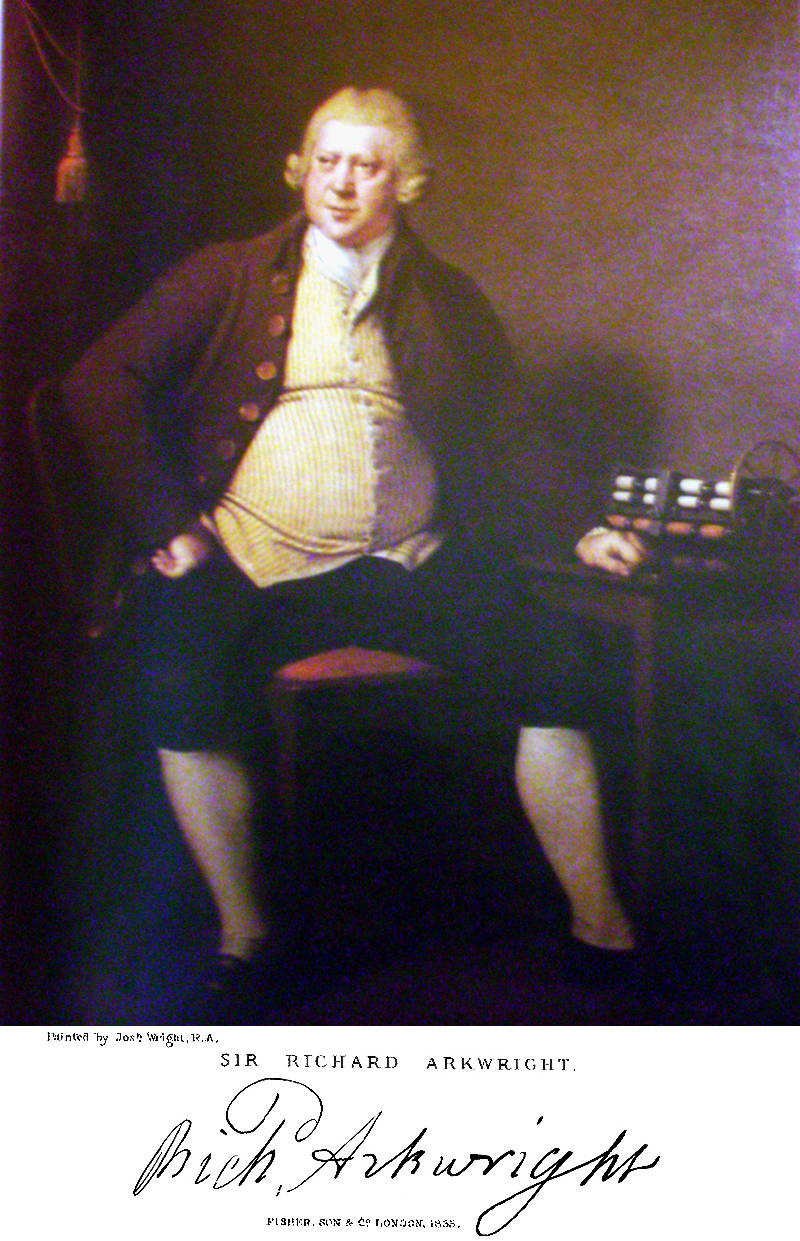

|
Richard Arkwright
Two almost simultaneous developmental directions took place
that resulted in the replacement of the household spinning
wheel. Richard Awkright (originally a barber and peruke maker)
developed a device that could spin yarn that was initially was
a "trapiche", powered by a single horse. Hence initially,
power was rated at ONE HP (one horse power).
|
|||
|---|---|---|---|
|
Click to see Richard Arkwright
|
|
Click to see Saxony Wheel Flyer & Bobbin
|
|
|
Click to see Richard Arkwright Family
|
|
Click to see Arkwright Water-frame
|
|
|
Click to see Arkwright Children
|
|
Click to see Arkwright's Cromford Mill
Water Frame, 1775 |
|
|
Click to see Arkwright Children
|
|
Click to see Water Wheel
(Coupled to Spinning Machines) |
|
|
Click to see the Arkwright Town House
|
|
Click to see Spinning Mill
(Coupled to Water Wheel) |
|
|
Click to see the Arkwright Country Estate
|
|
Click to see Details of
Throstle Spinning |
|
| Click to see Household Spinning Wheel |
|
Click to see Charles Danforth's Throstle
1824 |
|
| Click to see an Ox-driven Trapiche |
|
||
© Copyright 2006 - 2018
The Esther M. Zimmer Lederberg Trust
 Website Terms of Use
Website Terms of Use